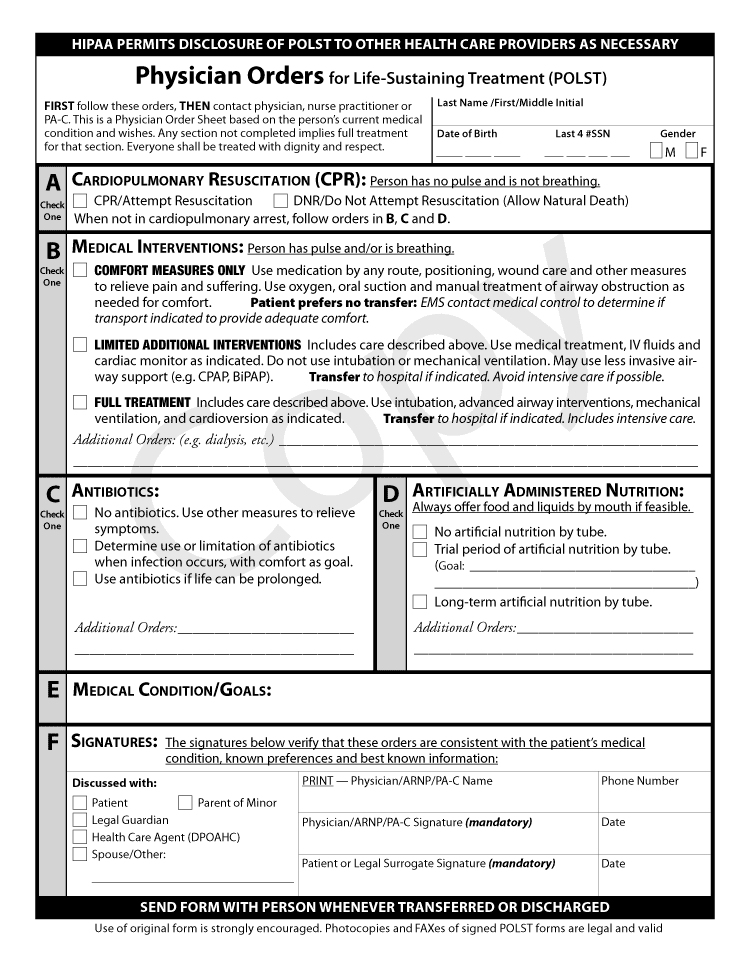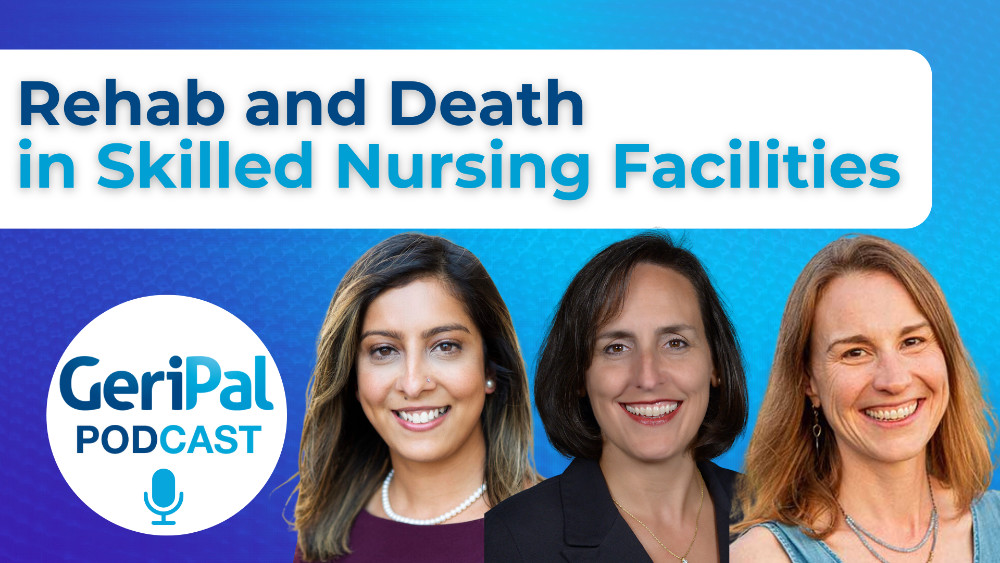

As a geriatrician who primarily sees patients in clinic, I find myself often wondering how best to apply what I’ve learned on the inpatient Palliative Care service to my outpatient setting. Addressing advance care planning sounds so sensible, yet somehow it often ends up being much more challenging than expected.
The other day in my outpatient geriatrics clinic, I addressed advance care planning with two different patients. One ended up being easy, the other…not so easy. In both cases I had already brought up advance care planning during the previous visit. (Although the policy wonks seem to think that just one paid visit every 5 years can do the trick.)
The easy situation was completing a POLST (Physician Orders for Life-Sustaining Care) for Mr. T, a 94-year old man with moderate dementia. As usual, Mr. T came to his visit accompanied by his son John*, who is his DPOA and used to be the primary daily caregiver as well (Mr. T eventually was placed in a board & care). Although in previous visits both the patient and his son had confirmed Mr. T’s preference to be DNR and allowed to die when his time comes, now that we were signing a POLST, I asked Mr. T again what he would want people to do if he were found down without a heartbeat.
“I’d want ‘em to get the shovel!” he said, cackling. His son chuckled as well. “Oh, Dad,” he said as he patted his father’s shoulder fondly. Together, we completed the POLST, indicating that Mr. T should be allowed a natural death, yet wants to be transferred to the hospital for treatable illnesses. Easy, but it all did take 25 minutes.
The next patient was Mr. N, accompanied as always by his partner & DPOA, Tom. Mr. N, who has Parkinson’s, is only 80, but over the past year has developed some definite cognitive impairment; his physical condition remains otherwise good. His partner, who has struggled with the caregiving, had recently left me a voicemail saying he was looking into hospice but hadn’t yet brought this up with his spouse.
As I was saying, not so easy. I tried to start off by eliciting Mr. N’s understanding of his condition and trajectory. It was hard to hear him well, since he speaks slowly and haltingly. He told me that he has Parkinson’s but thought things were going pretty well, and thought that the new medicine will make him better.
Hmm. I had hoped he’d have more insight and memory. We had discussed Mr. N’s declining cognitive abilities and diminishing function in several previous visits. And no new medicine had recently been started. What to do? How does one engage in advance care planning when: a) patient, proxy, and doctor have different visions of reality; b) you think perhaps the patient doesn’t have capacity but you’re not 100% sure; c) it takes a long time for patient to speak clearly; d) you’re now running 10 minutes late for the next appointment; and e) you have no slots available in clinic next week (this is hardly the kind of thing that can be addressed during an overbook)?
The truth is that in clinic somehow I muddle through these situations, as best I can. I believe in advance care planning, in understanding goals, and in helping people figure out what is the right care for them, given their values and medical condition. But often, it seems so much harder than doing inpatient palliative care consults.
*Names and certain details have been changed to protect identities.



